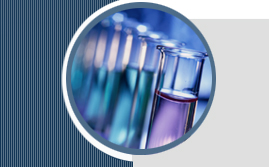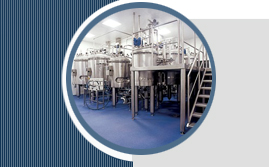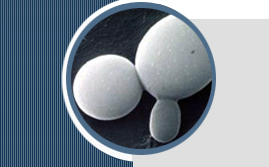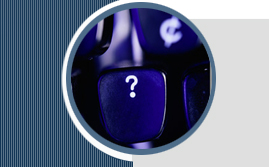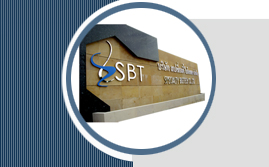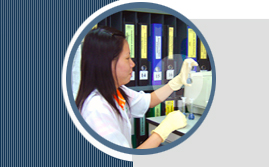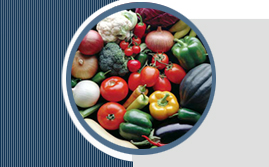| |
Shrimp
-Beta glucan binding protein and its role in shrimp immune response (For more detail please visit http:// www.elsevier.nl/locate/aqua-online)
- Preparation of spent brewer’s yeast ß -glucans with a potential application as an immunostimulant for black tiger shrimp, Penaeus monodon . (For more detail please visit http://www.sciencedirect.com/science/journal/09608524)
-Glucan from spent brewer’s yeast: preparation, analysis and use as a potential immunostimulant in shrimp feed. (For more detail please visit http://www.springerlink.com/(5plzdbmyzgbb2c55cyuu2nrn)/app/home/journal.asp?referrer
=parent&backto=linkingpublicationresults,1:100229,1)
-Dietary ß-1,3-glucan e ffectively improves immunity and survival of Penaeus monodon challenged with white spot syndrome virus.(For more detail please visit http:// www.elsevier.com/locate/fsi)
Beta glucan binding protein and its role in shrimp immune response
Francisco Vargas-Albores, Gloria Yepiz-Plascencia
Marine Biotechnology Laboratory, CIAD, P.O. Box 1735, Hermosillo, Sonora 83000, Mexico
ABSTRACT
Despite their relatively short life and assumed lesser complexity, crustaceans have mechanisms to detect foreign matter. In particular, they appear to recognize common characteristics present in bacteria and fungi, such as lipopolysaccharides LPS and ß-glucans. Although these microbial components can directly activate defensive cellular functions such as phagocytosis, melanization, encapsulation and coagulation, plasma recognition proteins amplify these stimuli. Beta glucan binding protein BGBP reacts with ß-glucans and the glucan–BGBP complex induces degranulation and the activation of prophenoloxidase proPO . This protein is present in all crustaceans studied so far and is highly conserved. Together with LPS-binding agglutinin, BGBP stimulates cellular function only after its reaction with LPS or ß-glucans, resembling the secondary activities of vertebrate antibodies. q2000 Elsevier Science B.V. All rights reserved.
Keywords: Penaeus; Immunity; Crustacea; Glucan
Credited by:
©2000 Elsevier B.V. All rights reserved. Aquaculture 191 (2000), 13–21
Preparation of spent brewer’s yeast ß -glucans with a potential application as an immunostimulant for black tiger shrimp, Penaeus monodon
M. Suphantharika, P. Khunrae, P. Thanardkit, C. Verduyn
Department of Biotechnology, Faculty of Science, Mahidol University, Rama 6 Road, Bangkok 10400, Thailand
ABSTRACT
Spent brewer’s yeast was autolysed and the insoluble yeast cell wall fraction obtained was used as a raw material for the preparation of brewer’s yeast ß -glucan (BYG). A simple alkaline extraction was applied and optimized. The BYG with significantly ( P 6 0 : 05) high carbohydrate and glucan contents of 92% and 51% (w/w), respectively and with a low protein content of 1.6% (w/w) was obtained by a single alkaline extraction using 5 volumes of 1.0 N NaOH at 90 0 C for 1 h. In vitro, this glucan significantly ( P 6 0 : 05) enhanced phenoloxidase (PO) activity of black tiger shrimp hemolymph as compared to controls without added glucan. Also in vivo, an oral administration of 0.2% (w/w) in diets for 3 days significantly ( P 6 0 : 05) increased the PO-activity of the shrimp. The potential immunostimulating properties of a commercial and other yeast-derived products were also evaluated for comparative purposes.
Keywords: Brewer’s yeast; ß -glucan; Immunostimulant; Phenoloxidase; Shrimp; Penaeus monodon
Credited by:
© 2002 Elsevier Science Ltd. All rights reserved. Bioresource Technology 88 (2003), 55–60
Glucan from spent brewer’s yeast: preparation, analysis and use as a potential immunostimulant in shrimp feed
P. Thanardkit, P. Khunrae, M. Suphantharika and C. Verduyn
Department of Biotechnology, Faculty of Science, Mahidol University, Rama 6 Road, 10400 Bangkok, Thailand
ABSTRACT
Spent brewer’s yeast was autolysed and the residual solids were further treated with hot alkali to produce a fraction containing 95% (w/w) carbohydrate, with a glycogen content of 42% and an apparent glucan content of ca. 53% (w/w). FTIR and solid state C-NMR spectra basically showed a spectrum characteristic for an impure ß -glucan. In vitro , this glucan induced release of prophenoloxidase from intact black tiger shrimp haemocytes. When fed to shrimp at 0.2% (w/w of the feed) for 3 days, significant increases in phenol oxidase, the number of haemocytes and the bacterial killing activity against the pathogen Vibrio harveyi were observed. Furthermore, this feeding resulted in the appearance of an inducible ß -(1,3)-glucanase in the liver. Methods to analyse the fractions are discussed and a number of commercial products with potential immune stimulating properties have been included for comparative purposes.
Keywords: Autolysis, cell wall, ß -glucan, ß -(1,3)-glucanase, phenol oxidase, Saccharomyces uvarum , shrimp ( Penaeus monodon )
Credited by:
© 2002 Kluwer Academic Publishers. World Journal of Microbiology & Biotechnology 18 ( 2002), 527–539
Dietary ß-1,3-glucan e ff ectively improves immunity and survival of Penaeus monodon challenged with white spot syndrome virus
Cheng-Fang Chang a, Mao-Sen Su b, Houng-Yung Chen c, I-Chiu Liao b
a Tungkang Marine Laboratory, Taiwan Fisheries Research Institute, Tungkang, Pingtung 928, Taiwan, ROC
b Taiwan Fisheries Research Institute, Keelung 202, Taiwan, ROC
c Institute of Marine Biology, National Sun Yat-sen University, Kaohsiung 804, Taiwan, ROC
ABSTRACT
The e ff ectiveness of dietary ß-1,3-glucan (BG), derived from Schizophyllum commune, in modulating the non-specific immunity of the grass prawn Penaeus monodon and its resistance to white spot syndrome virus (WSSV) were investigated. Juvenile P. monodon (6.5±0.4 g) were fed for 20 days on a series of test diets containing graded levels of BG (0, 1, 2, 10, 20 g/kg diet) and were then challenged by injection of WSSV. The haemolymph total haemocyte count (THC), phagocytosis (PI), phenoloxidase (PO), superoxide anion (O - 2) and superoxide dismutase (SOD) production were measured at days 0, 1, 3, 6, 9, 12 and 24 after challenge, and shrimp survival rate was also recorded. All the shrimps fed on diets containing BG no more than 1 g/kg died by day 12. Conversely, the survival rate of shrimp fed with the diet containing 10 g/kg BG was significantly higher (P<0.05) by day 9 than that of the other groups. When screened by the WSSV PCR diagnostic procedure, the percentages of surviving juveniles of the BG 2, 10, 20 g/kg groups that were 2-step WSSV negative, were 55, 65 and 65%, respectively. The haemolymph THC, PO, O - 2 and SOD production of the 2, 10 and 20 g/kg BG diet groups dropped drastically immediately after the WSSV challenge but subsequently returned to normal. Therefore, oral administration of BG at an optimal level of 10 g/kg diet for 20 days e ff ectively enhanced the immune system and improved the survival of WSSV-infected P. monodon.
Keywords: Penaeus monodon ; ß-1,3-Glucan; Survival; White spot syndrome virus; Total haemocyte count; Phagocytosis; Phenoloxidase; Superoxide anion; Superoxide dismutase; Immunity
Credited by:
© 2003 Elsevier Ltd. All rights reserved. Fish & Shellfish Immunology 15 (2003) 297–310
|
|
